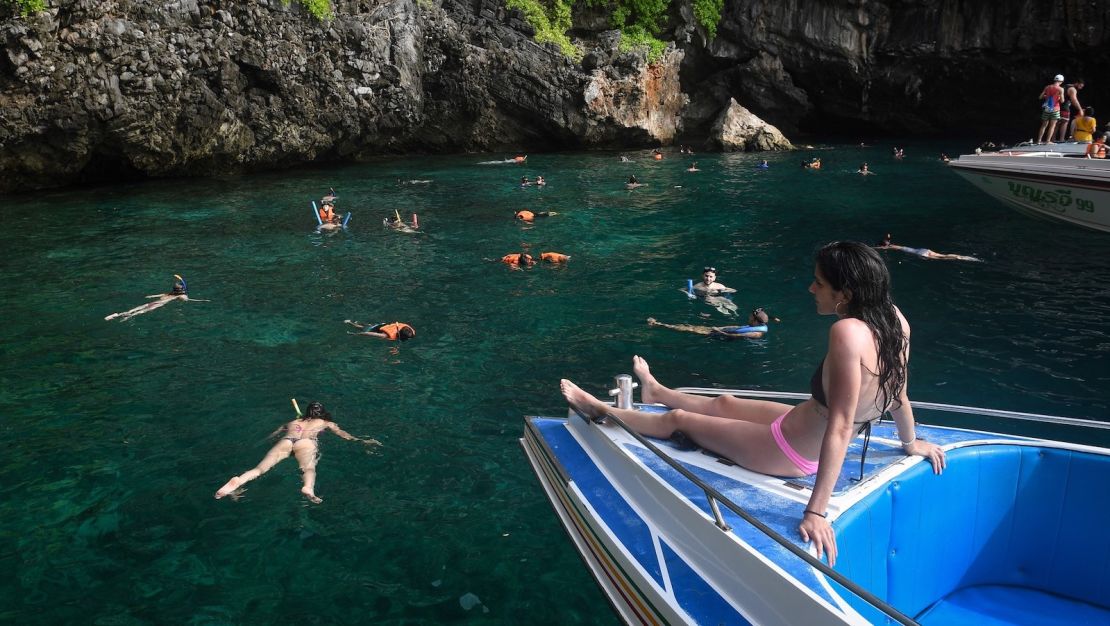It’s 9 a.m. on a May morning in Thailand’s Maya Bay in the Andaman Sea, a destination made famous by “The Beach” movie starring Leonardo DiCaprio.
But instead of the pristine, empty shores seen in the film directed by Danny Boyle, the scene is far more chaotic. Selfie-taking tourists line the sand, which is crammed full with speed boats.
Visitor numbers multiply by the minute as boats pour in an out of the bay, dropping off more bodies to sunbathe and snorkel.
But as of June 1, the bucket list Thailand hotspot is blocking its shores to visitors. Well, temporarily.
Part of the Hat Noppharat Thara-Mu Ko Phi Phi National Park, Maya Bay will be closed from June 1 to September 30, 2018 on the orders of Thailand’s Department of National Parks, Wildlife and Plant Conservation (DNP) as part of a four-month rejuvenation program.

According to a statement issued by the Tourism Authority of Thailand (TAT), boats will not be allowed to enter the bay in front of the beach or drop anchor at Loh Samah Bay, both part of the tiny Ko Phi Phi Leh island.
Travelers can instead see the bay between the two cliffs that form a natural entrance to the lagoon, under the strict supervision of the DNP.
“During the four-month period, the DNP will undertake a coastal and marine environment quality evaluation study on the condition of reef and beach resources, environmental control and tourism management,” says the TAT’s statement.
“This is to properly determine measures for environmental sustainability of Maya Bay during future off-tourist seasons.”

First Boracay, now Maya Bay
Thailand does close national parks annually for a variety of reasons, from extreme weather to ecological recovery, but this is the first time Maya Bay has been shut – though environmentalists have been pushing the move for years.
Maya Bay is part of Thailand’s Krabi province and close to Phi Phi Don, a popular beach holiday destination. Data released by the DNP suggests that the Hat Noppharat Thara-Mu Ko Phi Phi National Park could see as many as 2.5 million visitors in 2018, a year-on-year rise of half a million.
The move to close Maya Bay follows on the heels of the Philippines government’s decision to close the popular tourist destination of Boracay for six months, beginning April 26, over concerns the island’s famous beaches and clear blue waters have been transformed into a “cesspool” due to sustained environmental damage.
Unlike tiny Maya Bay, which has no hotels or inhabitants, Boracay is home to as many as 17,000 people, many of whom are directly engaged in the tourism industry.






